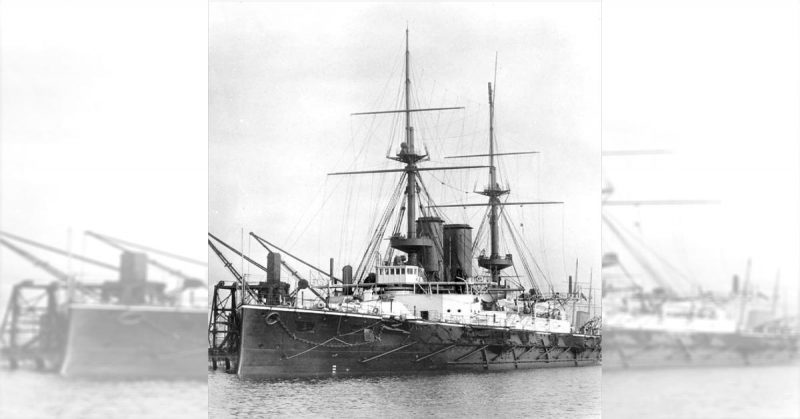A century on, the sailors who died in a shocking attack in Lyme Bay have been remembered.
HMS Formidable, a Royal Navy battleship, was sunk following a torpedo attack by a German U-boat in 1915 on New Year’s Day. The wreck is on the seabed, about 25 miles south of Lyme Regis.
Two men traveled from Portland to deposit a wreath on the wreck.
The trip was a touching way to recognize the demise of William Dingwall, who turned 22 on the day of the attack. His body was never recovered.
Dingwall’s nephew, Bob Hudson, came from Spain to lay a garland, after learning about William’s fate while researching the family’s past. William’s brother Robert was killed at the Somme in 1917. Their sister, Hudson’s mother, born in 1910, was only four-years-old when William died.
It was significant to Robert that the trip is done in January, he explained, so he could experience what conditions could have been like.
It was an honor for him, and very touching. Robert, who he’s named after, died on the Sommer and they are very lucky there’s a grave, which he visited approximately three decades ago.
Hudson said he hadn’t been aware of William prior to researching the family history.
He never met his grandparents and had few uncles and aunts, so there was a big gap in his life concerning relatives.
What occurred to the Formidable on that day was terrible. The ship should have been in the harbor that day in Portland, but someone in command decided to conduct reconnaissance along the coast. That’s when the German submarine found them.
Over 500 men were killed that day. They are memorialized at Lyme Regis Cemetery, which Hudson also toured as a part of his journey.
He added that no family member has ever gone there and honored his uncle, so he decided to go and do it. It was poignant to realize his DNA was there, located somewhere on the seabed. It was the right thing to do, but very sobering.
His mother would have been very pleased, he said. He can’t imagine what it must have been like, at that age, to experience two brothers going to war and never returning.
Peter Targett, captain of the charter boat Big Buoy, said the circumstance surrounding the Formidable is a part of local history that he finds captivating.
He doesn’t know how any of them made it to the seashore given the distance the ship was from land, Bridport News reported.
It’s nice that people trace family links. It’s a means of remembering their local history, he said.
